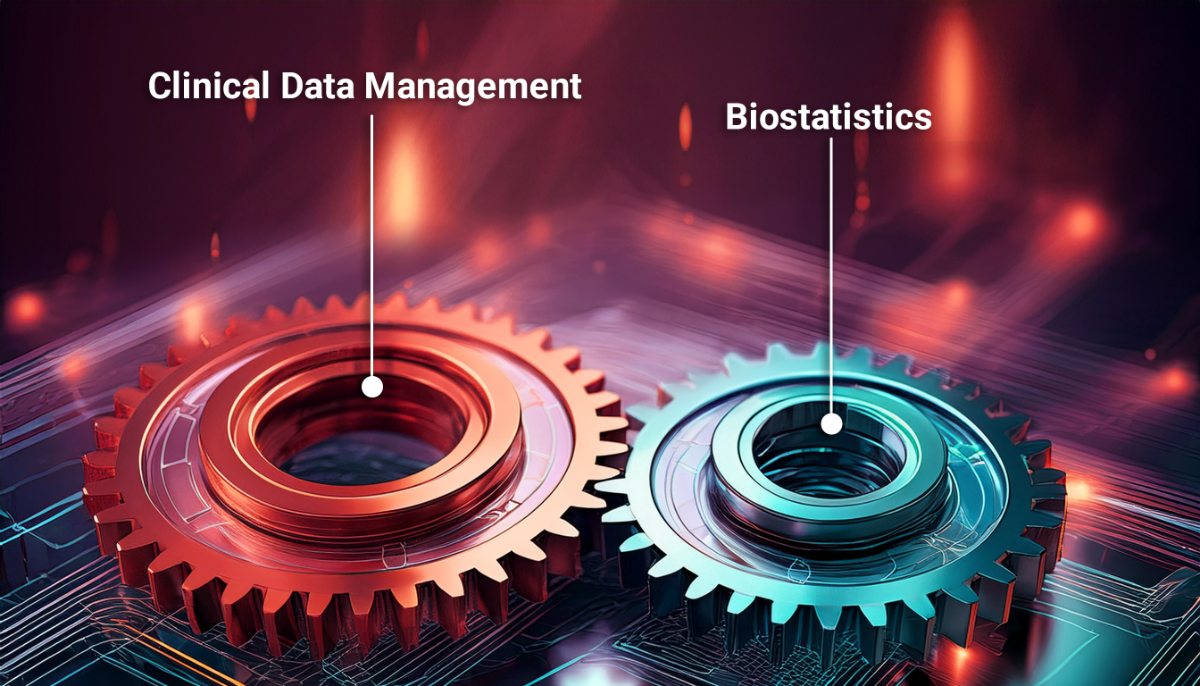When Clinical Data Management (CDM) and biostatistics teams collaborate from the outset of a trial, the impact is transformative. Clearer endpoint definitions, more consistent data capture, and faster, cleaner analysis pipelines all become achievable. This helps result in accelerated timelines, fewer surprises during database lock, and a higher level of confidence in your regulatory submissions.
In this blog, we explore the root causes of the CDM–biostats disconnect—and share practical strategies for closing the gap to drive smarter, more efficient trial delivery.
Understanding the Disconnect
In many trials, CDM and biostatistics teams are brought in at different stages, work on separate systems, and operate without shared timelines or definitions. Statisticians are often looped in too late, sometimes after protocol finalization, limiting their ability to shape how data is defined and collected. Meanwhile, data managers are expected to deliver datasets aligned with statistical requirements they weren’t involved in shaping.
This fragmented approach creates friction at every stage: mismatched metadata, incomplete audit trails, duplicate effort, and data queries that could have been avoided with better alignment. Add siloed technologies and inconsistent communication on top, and collaboration becomes even more difficult as the trial progresses.
Why Early Alignment Matters
The earlier CDM and biostats teams collaborate, the greater the benefit downstream. Involving statisticians during protocol development and case report form (CRF) design enables a shared understanding of study objectives and endpoints. This allows data managers to capture exactly what is needed, in the right format, for statistical analysis.

By co-creating data dictionaries, controlled terminology, and metadata frameworks from the outset, teams can reduce ambiguity, standardize data flows, and prevent issues before they arise. This joint approach ensures that datasets are analysis-ready, and statistical programming teams don’t have to waste time cleaning or restructuring data just to get started.
Best Practices to Build Synergy
Here are four practical steps that make a real difference in ensuring CDM-biostats alignment:
🔹 Joint Planning: Involve both CDM and biostatistics in protocol and CRF design discussions from day one. This ensures alignment on study endpoints, visit schedules, and data collection strategies.
🔹 Shared Tools & Platforms: Implement collaborative platforms such as Medidata Rave, SAS, and Veeva to create transparency and alignment across teams. Centralized systems reduce version control issues and make it easier to trace data lineage.
🔹 Regular Syncs: Schedule weekly or biweekly cross-functional meetings during critical phases, especially during data cleaning and database lock. These touchpoints help flag issues early and reduce delays caused by miscommunication.
🔹 Real-Time Queries: Establish integrated query resolution workflows to quickly address discrepancies and facilitate smoother handoffs between CDM and biostats.
The Results
Specialist CRO providers enable a proactive and integrated approach improves both efficiency and quality. When CDM and biostatistics teams work as one, database locks happen faster, tables/listings/figures (TLFs) require less rework, and data submissions are cleaner and more robust.
The downstream benefits are significant: fewer queries from regulatory agencies, reduced cycle times, and more confident clinical decision-making. These outcomes are only possible with a strong, expert-led data management strategy in place. Specialist providers offer full-service clinical data management support across all trial phases—from Phase I through Phase IV.
Conclusion
In today’s data-driven clinical environment, success depends not just on the capabilities of individual functions, but on how well they collaborate. Bridging the gap between CDM and biostatistics isn’t just about streamlining processes, it’s about unlocking speed, precision, and quality at every stage of your trial.
Discover how Phastar’s integrated biometrics and data management services can help accelerate your clinical development programs.



